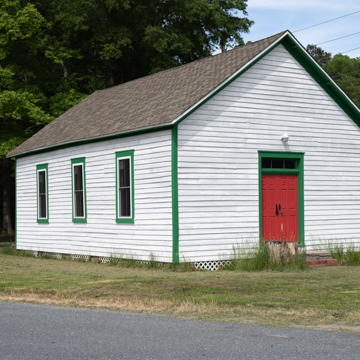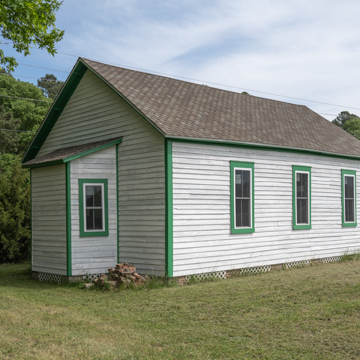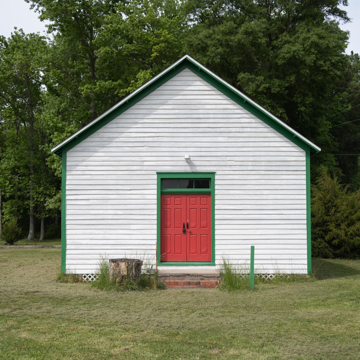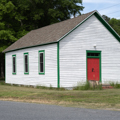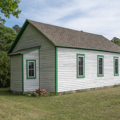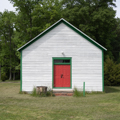Built as Trinity Methodist Episcopal Church and later used by the Hughes African American Methodist congregation from 1955 to 1998, the church now serves as the nontraditional longhouse of the Nause-Waiwash Native American tribe. The Nause-Waiwash are the descendants of the Nanticoke, Choptank, and Pocomoke Indians who were the original inhabitants of this area of Dorchester County. The tribes were officially recognized by the colonial government in a 1720 treaty, but by midcentury the treaty was dissolved and the tribes were forced to flee into the marshes. Although this building bears no resemblance to the traditional longhouse, as seen in a replica built on the site of Handsell at Indiantown, it serves as a permanent location for tribal ceremonies and gatherings. The plain meetinghouse is a rectangular, gabled-front building with a double-door entrance with transom and a rear shed-roofed apse.
You are here
NAUSE-WAIWASH LONGHOUSE (TRINITY METHODIST EPISCOPAL CHURCH)
If SAH Archipedia has been useful to you, please consider supporting it.
SAH Archipedia tells the story of the United States through its buildings, landscapes, and cities. This freely available resource empowers the public with authoritative knowledge that deepens their understanding and appreciation of the built environment. But the Society of Architectural Historians, which created SAH Archipedia with University of Virginia Press, needs your support to maintain the high-caliber research, writing, photography, cartography, editing, design, and programming that make SAH Archipedia a trusted online resource available to all who value the history of place, heritage tourism, and learning.






